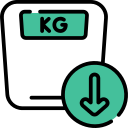Answered by
Secondmedic Expert
Although mastectomy bras are commonly thought of as post-surgery lingerie, they can also be incredibly useful for crossdressers. Their design is built to provide comfort and support for women who have had a surgical breast procedure, but this same functionality can be applied to other forms of chest reshaping. The soft cups have no underwire or padding, which makes them ideal for providing a smooth transition when you don't want an abrupt change in shape. Additionally, the wide bands are adjustable and snug enough to keep your chest area secure without compressing it too much.
The fabric used in most mastectomy bras is lightweight and breathable while also being durable enough to act as a barrier between your body and your clothing if you choose not to wear a corset underneath it. This feature allows you to maintain confidence in how you look on the outside while still feeling comfortable with what's going on underneath the surface - making it perfect for crossdressers! Plus, these styles come with options like low-cut backs and front closures that offer further customization capabilities so that you can truly flaunt what makes you unique.
In short, mastectomy bras provide all-day comfort combined with subtle yet effective shaping solutions – making them beneficial for both individuals recovering from surgery who need extra support and those looking for ways to experiment with their identity without overdoing it!
Read Answer 
Q. Hello Doctor, from past 3 weeks I have too much dandruff problem and it cause hair loss will you suggest any best solution for this?
Doctor Answer is medically reviewed by SecondMedic medical review team.
Answered by
Secondmedic Expert
Dealing with excessive dandruff leading to hair loss can be frustrating, but there are effective ways to address this issue. Here's what you can do:
1. Switch to a Gentle Shampoo: Opt for shampoos specifically designed for dandruff, containing ingredients like ketoconazole, zinc pyrithione, coal tar, or selenium sulfide. Use these shampoos regularly to reduce dandruff buildup.
2. Scalp Massage: Gently massage your scalp while shampooing to help remove flakes and improve blood circulation, which can promote healthier hair growth.
3. Avoid Hot Water: Wash your hair with lukewarm water instead of hot water, as hot water can dry out your scalp and worsen dandruff.
4. Balanced Diet: Ensure you're eating a balanced diet rich in vitamins and minerals essential for healthy hair and scalp, such as omega-3 fatty acids, zinc, and B vitamins.
5. Manage Stress: Stress can exacerbate dandruff problems. Practice stress-relief techniques like meditation, yoga, or regular exercise to help manage stress levels.
6. Apple Cider Vinegar Rinse: Consider using diluted apple cider vinegar as a rinse after shampooing. It can help restore the scalp's pH balance and reduce dandruff.
7. Consult a Dermatologist: If the issue persists despite trying home remedies or over-the-counter solutions, seek advice from a dermatologist. They can provide a personalized treatment plan tailored to your specific scalp condition.
Remember, consistency is key when dealing with dandruff. Give these remedies some time to work, as immediate results might not always occur. It's essential to find what works best for your scalp, so don't get discouraged if you don't see immediate improvements.
Taking care of your scalp health not only addresses dandruff but also aids in reducing hair loss associated with this issue. Feel free to incorporate these tips into your routine and observe how your scalp responds. If the problem persists or worsens, seeking professional guidance is always recommended.












